| December 18, 2012 | Volume 08 Issue 47 |
|
 | 2013 COOL PARTS CALENDAR
Designed by designers and engineered for engineers, our annual Proto Labs Cool Parts Calendar features the visions of product developers across the nation and around the world. It features monthly contests, part applications, industry tradeshow dates, and (of course) those elusive days of the week.
Request your free calendar today. |
 | What does Designfax want for the holidays? New engineering subscribers
In this season of sharing, why not share your issue of Designfax with an engineering colleague or two -- or even a couple more? Designfax is always looking for new design and manufacturing readers, and we'd appreciate your help. Just forward your issue and ask your engineering buddies to take a look and consider subscribing. Inspiration and real-world solutions are just a click away. Thanks to all of the Designfax readers, sponsors, writers, and article contributors for making 2012 a great year!
Go to the Designfax subscribe page. |
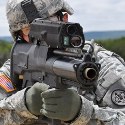 | Army refines airburst technology, calls XM25 'The Punisher'
The U.S. Army is preparing to conduct a second Forward Operational Assessment of its XM25 Counter Defilade Target Engagement airburst weapon system. The hand-held weapon fires a high-explosive airburst round capable of detonating at a specific, pre-determined point in space near an enemy target hidden or otherwise obscured by terrain or other obstacles.
Read the full article. |
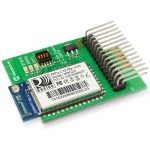 | Best Products: Enable Internet of Things via simple serial connection
Design engineers can easily add Wi-Fi connectivity to their products using new Microchip Technology Wi-Fi modules based on Roving Networks technology. These solutions use a simple serial interface to connect with any PIC microcontroller, and expand Microchip's wireless portfolio with the industry's lowest power consumption along with an integrated TCP/IP stack in a certified Wi-Fi solution. The Wi-Fi modules support all of Microchip's 8-, 16-, and 32-bit PIC microcontrollers.
Click here to learn more. |
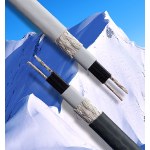 | Best Products: Self-regulating heating cables
Heat Trace 2700 Series Self-Regulating Heating Cables from Heat Trace Products provide freeze protection and process temperature maintenance for fluid transport and storage systems. They feature a multilayer construction and supply a specified amount of heat at any point along their length in direct response to local temperature variations. Capable of maintaining temps up to 150 degrees F, with intermittent exposure to 185 degrees F, these cables are offered in output wattages of 3-, 5-, 8-, and 10-W/ft at 50 degrees F. They will not overheat or burn out when overlapped, and they can be cut to length and terminated in the field.
Click here to learn more. |
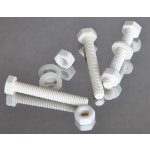 | Best Products: Ceramic fasteners ideal for demanding applications
The Goodfellow Ceramic and Glass Division has added a range of ceramic nuts, bolts, and washers for applications where high temperature, high voltages, magnetism, or harsh conditions greatly limit or prohibit the use of other materials. The ceramic fasteners are of high purity, fully dense, and impervious. The standard product range includes alumina hexagonal head bolts in metric sizes from M2 to M8, along with their matching nuts and washers. Goodfellow can often supply, upon request, different headstyles or special lengths as well as inch threaded fasteners and other materials such as zirconia, metals, and polymers.
Click here to learn more. |
| | Videos+: Technologies and inspiration in action | Impressive: Sand Flea robot jumps 30 ft up
The Sand Flea is an unassuming, 11-lb rolling-platform robot with one exceptionally useful trick: Normally it drives like an RC car, but when it needs to it can jump 30 ft into the air. This creation from Big Dog robot maker Boston Dynamics features an onboard stabilization system that keeps it oriented during flight to improve the view from the video uplink and to control landings. Development of Sand Flea is funded by the US Army's Rapid Equipping Force. Gotta love the super-tough-plastic construction. It gets a workout.
View the video. |
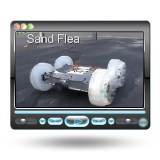 |
3D printed exoskeleton lets little girl lift arms and play
Stratasys released a video and case study last week demonstrating how 3D printing has helped 4-year-old Emma Lavelle overcome the limitations of a congenital disorder, allowing her to use her arms for the first time. Using a Dimension 3D printer, researchers at the Alfred I. duPont Hospital for Children in Philadelphia were able to create what little Emma calls her "magic arms." The device is a custom-designed, lightweight robotic exoskeleton that enables her to conquer greatly limited joint mobility and underdeveloped muscles. Really neat.
View the video. |
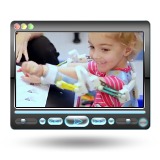 |
Flying inversion object aims to inspire new drive concepts
The nature-loving wizards at Festo have combined extreme lightweight construction, electric drive units, and control and regulation technology to create SmartInversion, a working helium-filled flying object that moves through the air by turning inside out. The shape is based on the geometrical band devised by Paul Schatz: its middle section, in the form of an articulated ring of six members, detaches itself from a cube and constantly turns inside out, taking on different geometrical shapes in the process. Kind of mesmerizing, don't you think?
View the video. |
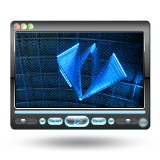 |
|
|